Raytracing, WinRAR, Kribi, HD Tach
Moving on to a few more non-3D benchmarks. Raytracing, via Realstorm's handy little benchmark, is next. Raytracing is entirely CPU based and, as such, provides a decent workout for these high-end processors. 320x180x32 with the standard settings.
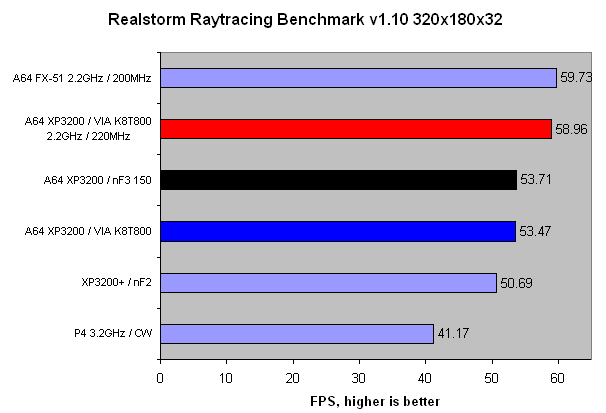
The Pentium 4 isn't looked to kindly upon in this activity. Note how both the nForce3 150 and VIA K8T800 boards are able to outrun the Barton XP3200+ on an nForce2. The nForce3 150 has consistently held a slight advantage over the K8T800 in most benchmarks. The overclocked K8T800 almost encroaches on FX-51 territory.
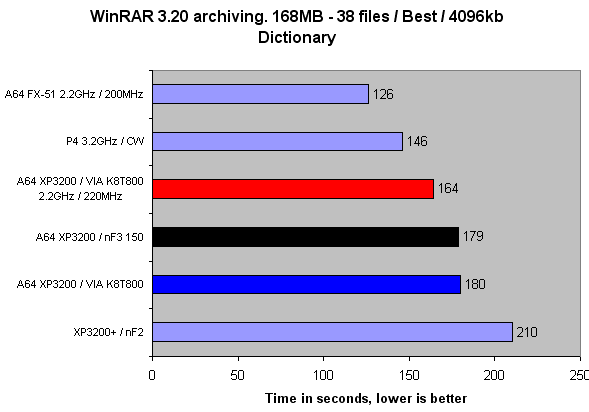
WinRAR 3.20 is used to archive 38 files ranging from 1kb to 50MB using the 'Best' quality method. Time is expressed in seconds. Testing with this archiving benchmark has shown a tremendous relationship to memory bandwidth, such that the FX-51 is a clear winner. Note just how much better the A64s do when compared to the Barton XP3200. Archiving is a very real-world activity, so its relevance is practical.
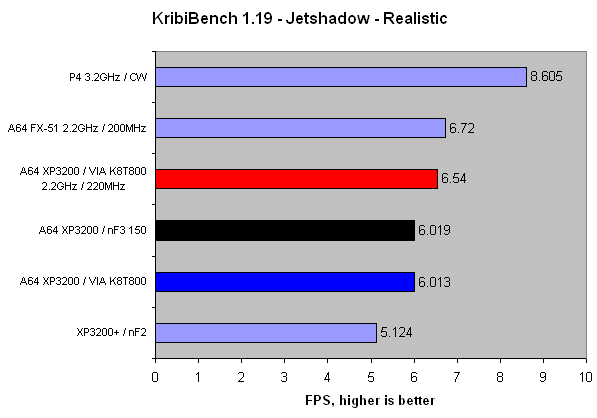
KribiBench is an easy-to-use benchmark from Adept Development. It's a software (read subsystem) renderer that's capable of rendering amazingly complex scenes. The benchmark can be downloaded from here and features models with 16.7 billion polygons. The test is the rather easier Jetshadow model with the realistic setting. The benchmark is heavily optimised for SSE / HT CPUs. That's why the standard 3.2GHz Northwood does so well. The A64-based CPUs have managed to increase their efficiency since the Barton core.
Two new chipsets, one with native SATA support, necessitated a test of each's SATA capabilities. A single Seagate 120GB SATA drive was run and HDTach 2.61 was used to determine the read speed of each controller. Suffice to say that VIA's 8237 (on-chip), Intel's ICH5/R (on-chip) and Shuttle's Sil3112A (PCI based) controllers produced almost identical results. The differences, however, as calculated by HDTach, was in the burst speeds. See below.
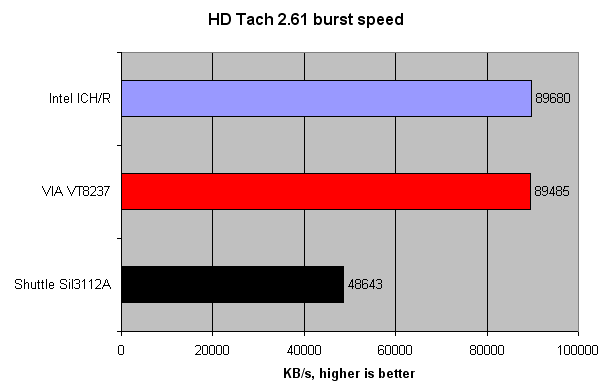
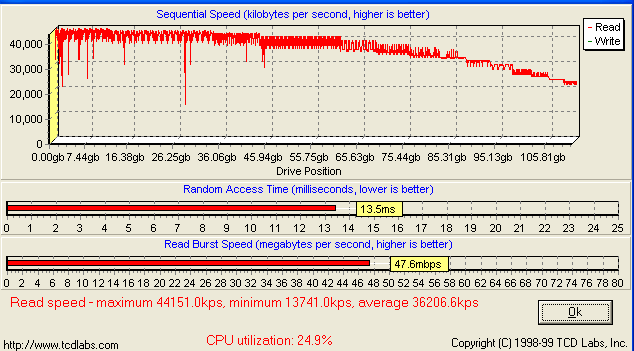
Also note the high CPU utilisation. That, too, was the case with VIA's VT8237. Intel's ICH5/R, on the ABIT's IC7-MAX3, showed only 2.3% usage. It's difficult to ascertain why the burst speed on the Shuttle board should be so low.
Gaming awaits.









